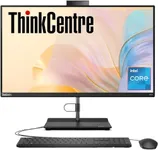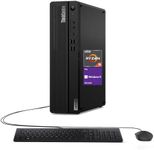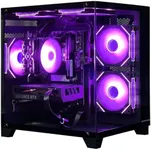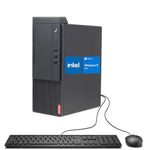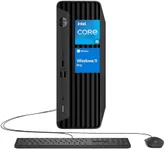Buying Guide for the Best Desktop Computer For Small Business
When choosing a desktop computer for a small business, it's important to consider the specific needs of your business operations. The right desktop can enhance productivity, ensure smooth operations, and provide the necessary support for your business applications. Focus on the key specifications that will impact performance, reliability, and future-proofing your investment. Here are the key specs to consider and how to choose the best fit for your business.Processor (CPU)The processor, or CPU, is the brain of the computer and determines how fast and efficiently it can perform tasks. For small businesses, a multi-core processor is ideal as it can handle multitasking and run multiple applications smoothly. Entry-level processors like dual-core are suitable for basic tasks such as word processing and web browsing. Mid-range processors, such as quad-core, are better for more demanding tasks like data analysis and running business software. High-end processors with six or more cores are best for intensive tasks like video editing or running virtual machines. Choose a processor based on the complexity and volume of tasks your business handles.
Memory (RAM)RAM, or Random Access Memory, is crucial for multitasking and running applications smoothly. More RAM allows your computer to handle more tasks simultaneously without slowing down. For basic business tasks, 8GB of RAM is usually sufficient. For more demanding applications or multitasking, 16GB is a better choice. If your business involves heavy data processing, graphic design, or video editing, consider 32GB or more. Assess the typical workload and software requirements of your business to determine the appropriate amount of RAM.
StorageStorage determines how much data your computer can hold. There are two main types: Hard Disk Drives (HDD) and Solid State Drives (SSD). HDDs offer more storage at a lower cost but are slower. SSDs are faster and more reliable but come at a higher price. For small businesses, an SSD is recommended for the operating system and frequently used applications to ensure quick boot times and fast access. A combination of an SSD for performance and an HDD for additional storage can be a good balance. Consider the amount of data your business generates and stores to decide on the storage capacity, typically starting from 256GB SSD and 1TB HDD.
Graphics Card (GPU)The graphics card, or GPU, handles rendering images, videos, and animations. For most small business tasks, an integrated GPU (built into the CPU) is sufficient. However, if your business involves graphic design, video editing, or 3D modeling, a dedicated GPU is necessary for better performance. Entry-level dedicated GPUs are suitable for light graphic tasks, while mid-range and high-end GPUs are needed for more intensive graphic work. Evaluate the graphic demands of your business applications to choose the right GPU.
Ports and ConnectivityPorts and connectivity options are essential for connecting peripherals like printers, scanners, and external drives. Ensure the desktop has a variety of ports, including USB (preferably USB 3.0 or higher for faster data transfer), HDMI or DisplayPort for monitors, and Ethernet for wired internet connections. Additionally, consider Wi-Fi capability for wireless networking. Assess the peripherals and network setup of your business to determine the necessary ports and connectivity features.
Operating SystemThe operating system (OS) is the software that manages the computer's hardware and software resources. The most common OS choices for small businesses are Windows, macOS, and Linux. Windows is widely used and compatible with most business software. macOS is preferred for creative industries and offers a seamless experience with other Apple products. Linux is an open-source option that can be customized but may require more technical expertise. Choose an OS based on the software your business uses and the familiarity of your team with the system.
Form FactorThe form factor refers to the size and shape of the desktop computer. Common form factors include tower, mini-tower, and all-in-one. Tower desktops offer more expandability and are easier to upgrade. Mini-towers are more compact and save space but may have limited upgrade options. All-in-one desktops integrate the monitor and computer into a single unit, saving space and reducing cable clutter. Consider the available workspace and the need for future upgrades when choosing the form factor.



